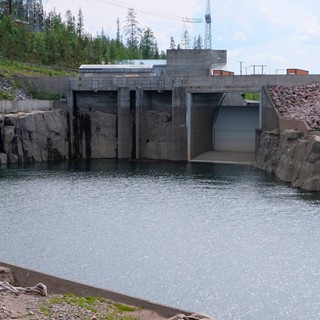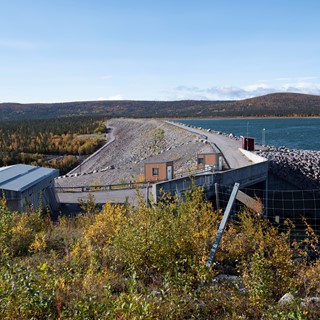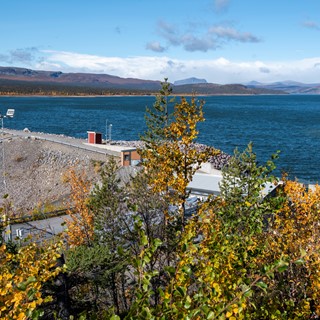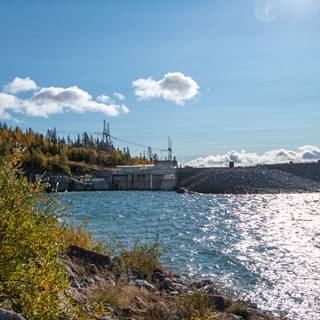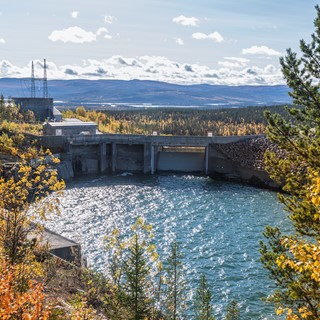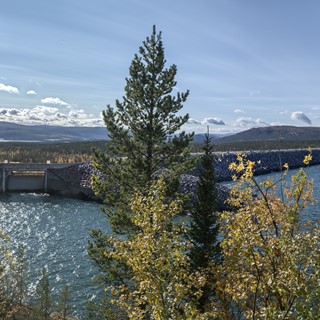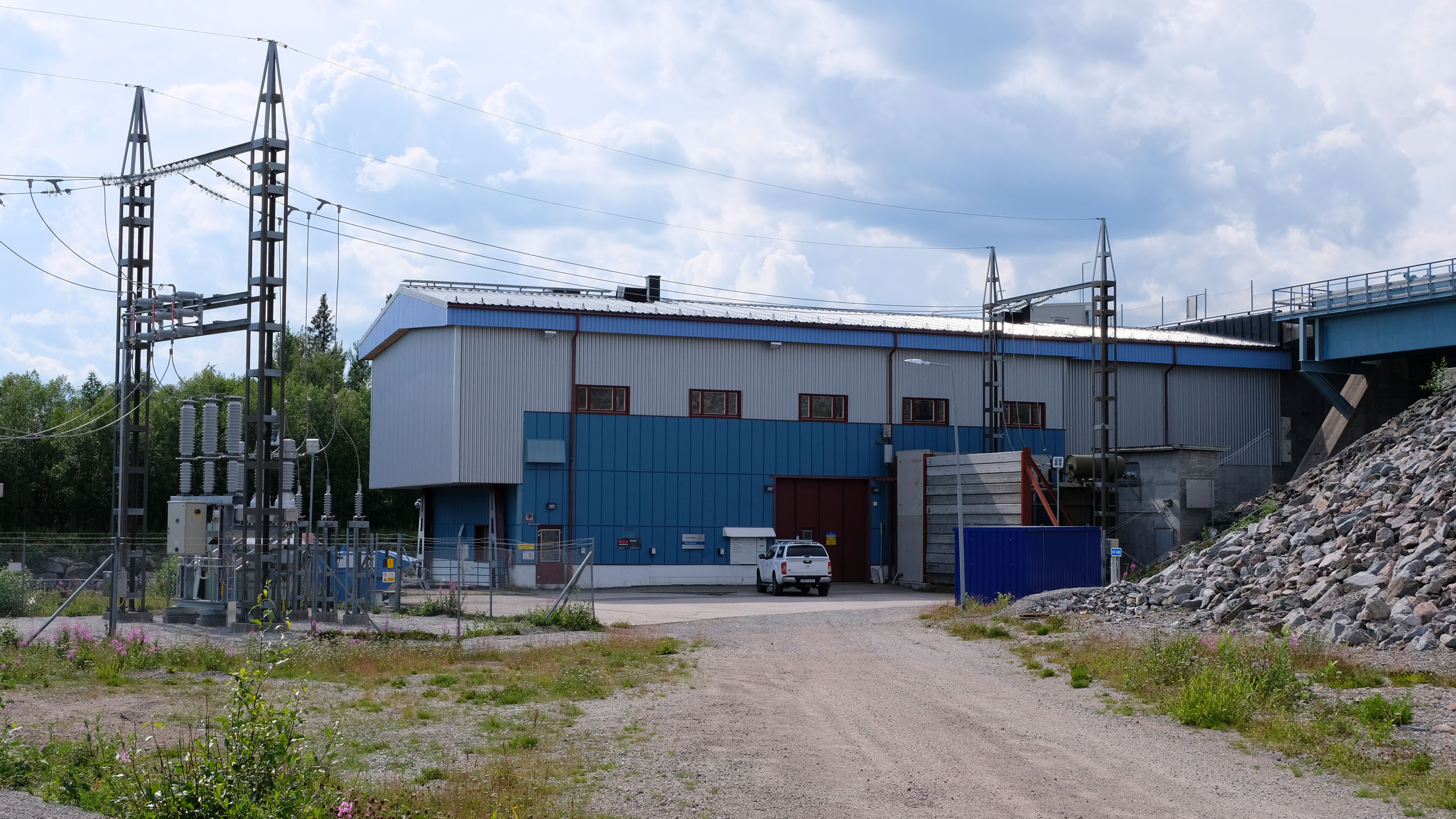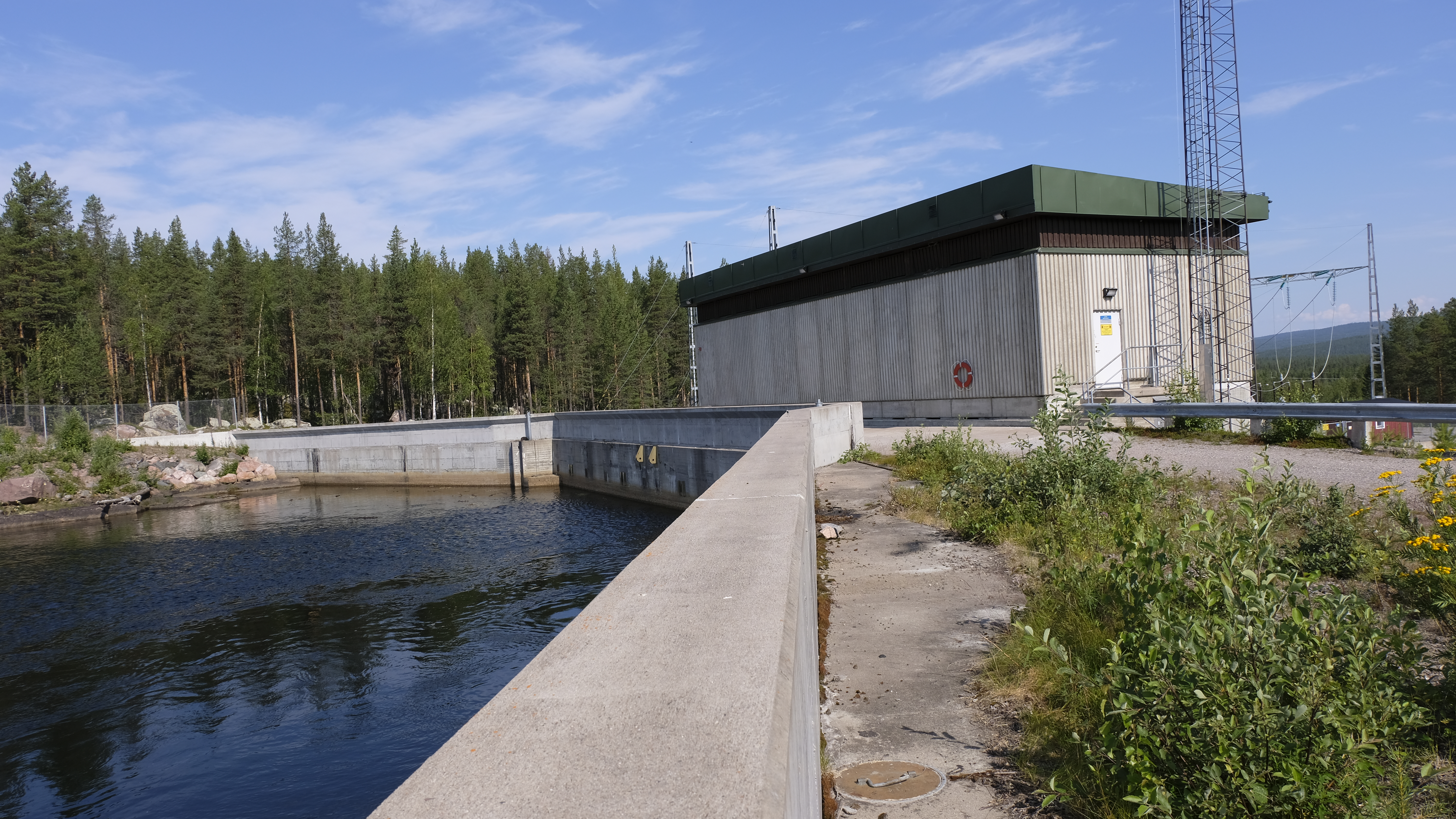History
Seitevare was built in a tributary to the River Lesser Luleälven, the Blackälven. The power plant is located 80 kilometres northwest of Jokkmokk, and is the northernmost power plant in the Lesser Luleälven. The site was and is a real freezing spot, just like Ritsem, Suorva and Vietas, but Seitevare is still top of the list for inhospitable weather. The site has areas of permafrost, meaning that frost forms below the tundra where the surface temperature of the ground is below zero degrees.
Around half a kilometre downstream from Savvonselet, the Blackälven formed an almost vertical waterfall with a front of around 50 metres, and a height of around seven to eight metres. The waterfall’s Sami name was Passekårtje (the sacred waterfall), and the site was a famous Sami sacrificial site. A cliff that looked like a strong male face shot out in the waterfall. The Sami would stop there to sacrifice the white reindeer to the gods of nature.
Seitevare’s power plant was built right across the deep valley of the River Blackälven. Below the dam site, six kilometres of the main river have been drained, and the site is located in a low montane area, largely below the coniferous tree limit. Before regulation took place, the land next to the river was mainly heath-like forest lands, quite scrubby with bog elements.
Seitevare has the Luleälven’s second biggest rockfill dam. With its 106 metres of height and 1.5 kilometres of length, it impounds Lake Tjaktjajaure. Apart from Tjaktjajaure, Lakes Snärak, Keddek and Rittak were also included in regulation, forming a water reservoir of 1,650 million m3. Close to 6,000 hectares of land were flooded in connection with the regulation, such as the Rittakdalen Valley’s ancient pine forest in the Sarek national park.
The original plan was to install two turbines in the power plant, but with a new, record-size turbine of 225 MW, one was enough. Thus, the machine room, which is located 175 metres below ground, could be kept small. Because of the deep excavation, the power plant can use a head of 182 metres.
In September 1968, the power plant was opened alongside Letsi’s power plant. At the opening, then Governor Ragnar Lassinantti summarised River Lule Älv’s power production as an enormous gift to the people of Sweden. Speaking about the conflict between natural resources and environment, he said: ‘We completely understand that our great wilderness areas can, much like the ore and the hydropower in the society of tomorrow, become an early, national treasure trove, and this is cause for gentleness with the exploitation of this wealth.’
Vattenfall’s Director General also wanted to say a few words at the opening; ‘The Luleälv area is a wonderfully rich river valley. It gives man both power and untouched wilderness. Cheap electricity is of not insignificant importance to Swedish trade and industry. At the same time, the river valley provides an enormous, untouched, and, for western Europe, unique area of mountains, lakes and wilderness, even after the construction of planned plants like Parki, Akkats and Ritsem.’
When the power plant in Seitevare was to be built, it wasn’t considered suitable for families to live so far up in the mountains. So a decision was made to erect a central residential area, from which staff could commute. It was natural that the area would be placed close to Jokkmokk. The result became an area just east of the town, also called ‘Galgbacken’ (the gallows hill). The name came from the fact that the site had been previously used for executions in the municipality, but this wouldn’t do in the long run, and the area was named Nyborg instead. Vattenfall rented the land from Jokkmokk Municipality, and the agreement from 1963 states that Vattenfall could rent the land for free, in return for the company giving it back without compensation for infrastructure such as roads, water and sewage.
33 family homes and a small number of ‘Egnahem’ homes were built in Nyborg. Workers from both Seitevare, Vietas and Ritsem lived there and commuted every week, as well as workers from Akkats, Ligga and Harsprånget, who commuted every day. At the beginning of the 1980s, pretty much all construction was finished, and the need for homes decreased. The municipality announced that they wanted the area back to build rental properties on, at which point Vattenfall returned it incrementally.
Images
All pictures below are part of the power plant's history. All images are copyrighted. You may use the images for personal use but the images may not be used in commercial contexts or printed matter without our permission. Click on the pictures to enlarge them.
Stories
Here you can read other people's stories about the power plant. And if you have your own story, please share it. Whether you want it to be published on the site or not, we are interested in all stories.
Do you have a story about the powerplant or life around the river?
Send us your story
Visitor information
Below you can read about everything you need to know before a possible visit to the power plant. When it is best to visit the power plant, how to find here and about the rules that apply in the area.

